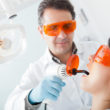
How To Find A Dentist A Pleasant Experience – Sleep Dentistry
Fear of the dentist considered as one of the most usual adult fears in the Western world. Thousands of people around the world filled with nervousness at the mere recommendation of going to the dentist and numerous of these people will eagerly avoid going to the dentist altogether if they can. Though, avoiding dentist can have a stern side effect on dental health, which may mean that in the long run, these individuals have to see much more of dentist than they would like. Luckily a technique called as sleep dentistry or sedation dentistry has been developed.
Sedation dentistry is now used all across North America for practices which should not normally need any anesthetic. Both pediatric and general dentists can take ongoing education courses in sedation dentistry, to allow them to provide a better class of service to their patients. Under several circumstances, sedation can also make it easier for the dentist to be able to perform their job! Mentioned below are a few of the major benefits that sleep dentistry has to provide to dentists and patients:
Relaxation of Patient: The patient felt relaxed and calmed about having the treatment done, indicating that they are open to having required treatments.
Increased comfort: Patients experience less anxiety throughout procedures, indicating that the experience of visiting a dentist is less unpleasant for them.
Gag Reflex Control: Patients who are worried about visiting the dentist may gag more frequently, making it complex for the dentist to do their job. Sedation dentistry will help to control gag reflex of a patient.
No or Little Memory of Treatment: After sleep dentistry, the patient will have no or little memory of treatment, so they will not be haunted using thoughts about the process later on.
Patient Co-Operation: Dentists meet up with less resistance from their patients, making it easy for them to work successfully and quickly.
While a lot of adverts refer to sleep dentistry as sedation dentistry, it does not involve being “put to sleep”, though patients may not respond to physical or verbal stimulation as the drugs they have been given have made them so relaxed and calm. These drugs aid in suppressing any feelings of panic or anxiety. Sedation drugs can administer in three major ways – orally in the form of a tablet or liquid form, intravenously with a drip connected to a vein or via inhalation. While some dentists provide patients all of these choices to patients, numerous dentists will avoid intravenous administration for smaller processes, as attaching a drip may carry its complications for exceedingly nervous patients.
Sedation dentistry is not suitable for everyone, and you should never feel rushed into accepting any sedation if you do not feel happy with it. In fact, several people feel more contented when they are wide conscious, and the dentist can talk them over the course of the treatment. Though, finding a dentist who is experienced and qualified to provide sedation dentistry will allow you the choice to select your dentistry experience.


